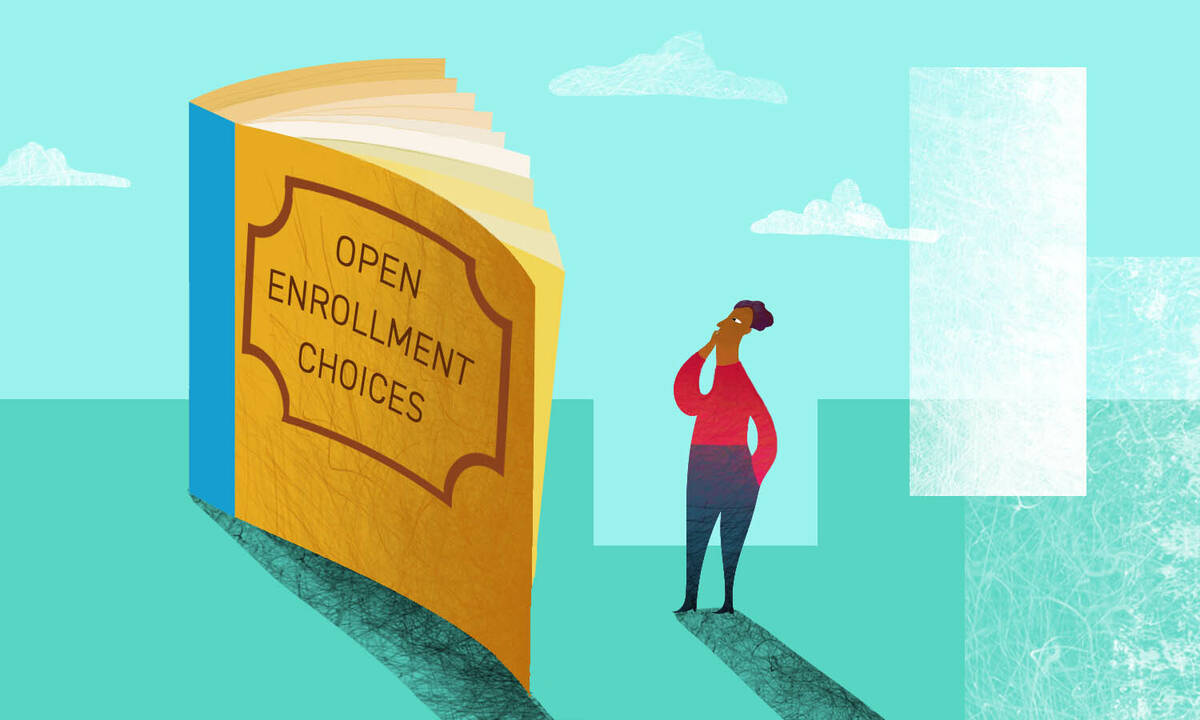Featured Faculty
Professor of Strategy; Associate Director of Healthcare at Kellogg
Richard M. Paget Professor of Management Policy; Professor of Strategy

Yevgenia Nayberg
When people have to choose a new health-insurance plan, they’re usually presented with several options. And while, generally, consumers appreciate choice, Amanda Starc, an associate professor of strategy at the Kellogg School, wondered if there’s a downside to all this choice when it comes to health insurance.
“In lots of markets we think choice is a good thing,” Starc says. “People have different preferences, and they might want different things. If I give you three choices instead of two, then worst-case scenario, if the third choice doesn’t work for you, just don’t take it, right?”
But the health-insurance market may not follow this rule of thumb, because in this sector, unlike, say, groceries or electronics, “the cost depends on who is buying the product,” Starc says. While insurers can no longer refuse to serve people with existing medical conditions or charge them higher premiums, factors like age and place of residence can influence the price consumers pay.
Starc and some colleagues wondered, given the nature of the health-insurance market, what set of plans insurers would offer. Can they increase profits by offering both generous and high-deductible plans? And, if so, what happens to the consumer? But it was difficult to answer these questions because nobody had previously studied the relationship between insurance plan design, insurer pricing, and the impact on consumers.
So Starc did just that in recent research with Kellogg professor of strategy Jeroen Swinkels, along with collaborators Hector Chade, at Arizona State, and Victoria Marone, at UT Austin. They created a model that showed that insurers with the ability to strategically set prices will offer more insurance-plan choices to consumers to increase their bottom lines, at consumers’ expense.
“Our work shows that insurers may act strategically to extract more money from consumers using the mechanism of choice,” Starc says.
The researchers built a model for what might happen if a monopolist insurer (the only one in a given market) had pricing power and could decide how many and what kind of plans to offer consumers. Their model quickly revealed a key driving force: insurers with the ability to price products strategically have incentive to offer consumers a variety of plans to learn more about them.
Why is that the case?
By offering more plan options, insurers can use what they learn about consumers to better optimize prices.
By offering more plan options, insurers can use what they learn about consumers to better optimize prices. For example, say you are offered a gold, silver, and bronze plan and you choose gold. Now the insurance company knows something about you. “You might be really sick. You might be really worried about the small chance of big medical expenses. Or you might know that, once you have generous insurance and no out-of-pocket costs, you’re going to consume a bunch more care,” Starc says. “The insurance company wants to use this information to maximize profits.” This means that, sometimes, restricting what the insurance company can do can help consumers.
One negative implication of insurers having complete control over plans and pricing is that it might lead to more people going without insurance.
“In a world where the government offers a basic minimal level of insurance as a default, our model shows that a monopolist insurer may ultimately not sell plans to about 40 percent of consumers,” Starc says. “That’s not because they would deny insurance to sick people [as was the case with preexisting conditions in the past], but because they would set prices so high that a large chunk of people simply wouldn’t buy it.” And because the insurer is able to earn higher profits off the consumers who do buy plans, it would end up ahead even with the loss of other customers.
Unfortunately, the findings here apply well beyond monopoly situations. “The basic mechanism we saw likely extends to any setting where the insurer has some ability to set pricing,” Starc says. “That includes an ACA-type setting, where there may be a few insurers competing.”
So what can be done to protect consumers from this seeming tyranny of insurance choice?
“For one,” Starc says, “we can try to ensure that the insurance market is more competitive. There have been lots of antitrust cases about the market power insurers might have, motivated by a need to limit that power.”
Government intervention is another option, Starc says. “The government intervenes with insurance partly to ensure sicker people have choices beyond very expensive options,” she says. “But we show another reason they should get involved: insurers’ ability to set prices higher than costs in a way that could lead to underinsurance.“
Policymakers would need to be “pretty creative” and carefully construct regulations, “keeping in mind the strategic incentives insurers have. It could take the form of taxes, subsidies, mandates, and other measures,” she says.
Ultimately the research highlights a critical area of healthcare requiring ongoing oversight and intervention, for public benefit. “Unfortunately,” Starc says, “what maximizes insurer profits can harm consumers.”
Sachin Waikar is a freelance writer based in Evanston, Illinois.
Chade, Hector, Victoria Marone, Amanda Starc, and Jeroen Swinkels. 2022. “Multidimensional Screening and Menu Design in Health Insurance Markets.” Working paper.